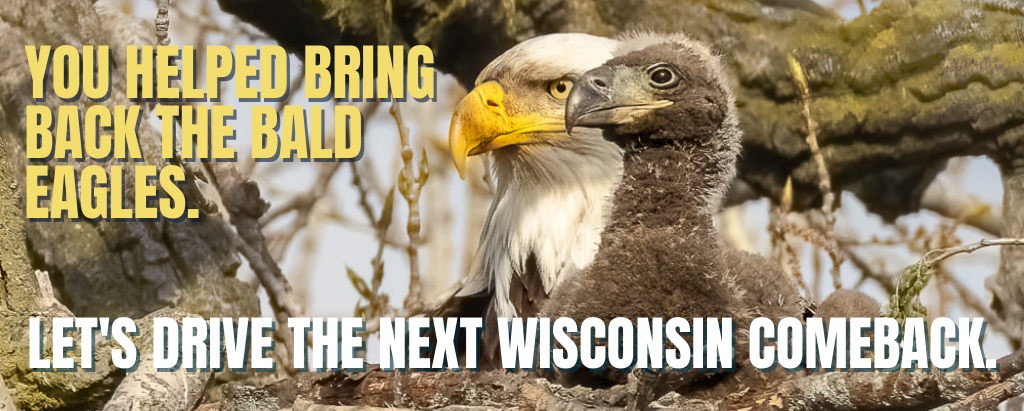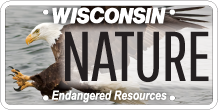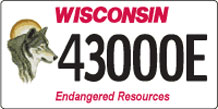Endangered resources license plates
help drive the next conservation success
Your purchase of an Endangered Resources license plate helps protect and restore Wisconsin's rare wildlife species and habitats. The $25 annual donation you make to keep the plate is critical for this important conservation work.
Revenues from plate sales, along with tax form donations and state matching funds, have accounted for as much as 40% of funding for endangered species conservation in some years and have supported the recovery of bald eagles, trumpeter swans and other species while preventing hundreds of other species from vanishing from Wisconsin.
You can buy a bald eagle or wolf design plate at any time from the Wisconsin Department of Transportation (DOT). No need to wait for your renewal notice or until your existing plate wears out. However, making this switch during registration renewal is most economical because DOT retains your original registration date. Thus, switching plates in the middle of your renewal cycle would mean you are asked twice in one year for the $25 donation.
Download and fill out Form MV2858 and mail it in, or fill it out at the DMV customer service center near you. The plate will be mailed to you by the Department of Transportation.
Frequently asked questions
Read the FAQ below for more information about the Endangered Resources license plates.
- How much does the Endangered Resources plate cost?
-
$25 annual donation
The Endangered Resources plate provides a $25 annual donation to the Endangered Resources Fund that pays for work to protect rare plants and animals and state natural areas. Your total bill, however, depends on where you are in the renewal cycle and if you want to customize your tag plate.
$15 One-time new plate fee
Plus annual vehicle registration fees according to where you live and the type of vehicle.
- How do I know if my registration is within three months of renewal?
-
See when your registration is up for renewal by looking at the registration card you receive and are required to carry in your car.
- How will my $25 donation be used?
-
Your $25 donation to the Endangered Resources Fund is tax-deductible if you itemize on your taxes. It pays for staff for the DNR’s Natural Heritage Conservation Program and activities to protect and restore native plants and animals and state natural areas. Our annual report shows how the DNR’s Natural Heritage Conservation staff carries out this responsibility, which includes caring for 70 mammals, 56 species of frogs, turtles and snakes, about 2,400 plant species and more than 100 distinct natural plant communities. Your donation is not used for wolf management purposes.
To meet this responsibility, Natural Heritage Conservation staff work with citizens, private landowners and businesses to count, locate and manage nongame species and plants; provide regulatory protection to endangered and threatened species; provide annual funding to nature centers, conservation organizations and others to help them build their capacity to engage volunteers to collect data to help NHC priority projects; and acquire, designate and manage a system of natural areas that protect the very best remnants of Wisconsin’s distinct natural communities and provide refuge for native species. Staff also work with private landowners to provide technical and financial assistance to help them manage their land to preserve and restore native species.
- Have more questions that we didn't cover?
-
See the DMV's frequently asked questions webpage for more information on fees or if you want to change from the wolf or badger Endangered Resources designs to the eagle design.



